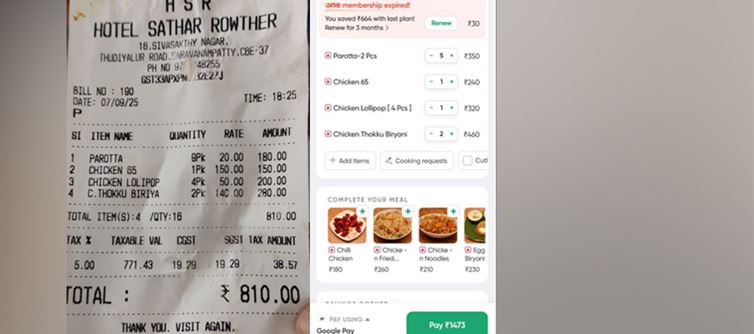
Ordering food online feels effortless — a few taps and your meal arrives. But that convenience comes with a shocking hidden cost. In some cases, food on apps like swiggy and zomato can be 50–80% more expensive than simply walking to the outlet yourself. Here’s why your bill explodes:
1. Menu Markups by Restaurants
Restaurants often list higher prices on delivery apps to offset the 15–30% commission charged by platforms. That “₹250 biryani” in-store suddenly becomes ₹350+ online.
2. Delivery Charges That Add Up
The delivery fee isn’t just for the rider — it covers logistics, incentives, and fuel. Depending on the distance, this can add anywhere from ₹40 to ₹120 per order.
3. Platform Fees — The New Norm
Both swiggy and zomato now charge an extra platform fee (Swiggy: ₹15, Zomato: ₹12.50 + GST). It’s small per order, but big when scaled to millions of users.
4. Taxes on Top of Taxes
An additional 18% GST applies to delivery services since Sept 2025, as per government policy. That means you’re taxed not just on food, but on the act of ordering it.
5. Surge Pricing & Hidden Add-ons
Busy hours? Extra ₹20–30 “surge fee.” Small order? Add a “small cart” penalty. Together, these inflate your bill without you realizing.
6. The Real Cost of Convenience
Your extra ₹663 isn’t just food — it’s funding an entire ecosystem: riders’ wages, app marketing, server costs, and shareholder profits. The question is — are you okay paying almost double for convenience?
⚡ Bottom Line:
Food delivery apps aren’t just about convenience anymore — they’ve become a luxury. What looks like comfort on your screen may actually be burning a hole in your wallet.
🔥 Closer: “That biryani you ordered online isn’t just spicy — it’s 81% costlier than reality.”




 click and follow Indiaherald WhatsApp channel
click and follow Indiaherald WhatsApp channel